| |
|
|
|
|
|
|
| |
|
|
|
3500 B.C. |
|
Sumer, first civilization in present-day Iraq. Historians place the date of the beginning of Sumerian civilization between 3500 B.C. and 3300 B.C. |
|
|
|
One of the chief cities of the Sumerian society was the City of Ur. British archaeologist C. Leonard Woolley excavated the City of Ur between 1922 and 1934 and found many beautiful artifacts. Among the 1800 graves he uncovered, 16 of them contained artifacts of great wealth. He named these tombs the Royal Tombs. Here are some pictures of a few of the artifacts. (1) goat, (2) Ram Caught in a Thicket. |
  |
|
|
The British Museum's The Royal Tombs of Ur |
|
|
|
University of Pennsylvania Royal Tombs of Ur |
|
3100 B.C. |
|
Menes, first pharoah of 1st Dynasty (3100 to 2850 B.C.) is credited with uniting upper (south) and lower (north) Egypt. The Narmer Palette (right) is an artifact that depicts the battle to unite Egypt. |
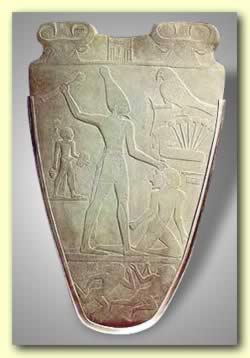 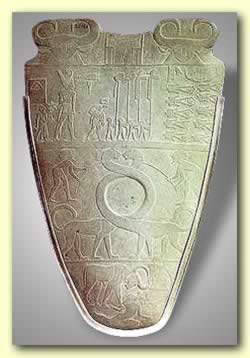 |
|
|
The Narmer Palette explained section by section |
|
3000 B.C. |
|
The Sumerians are credited with building some of the first pyramid type monuments which were actually temples, known as "ziggurats". This ziggurat was excavated by Woolley from the City of Ur and dates to around 2100 B.C. |
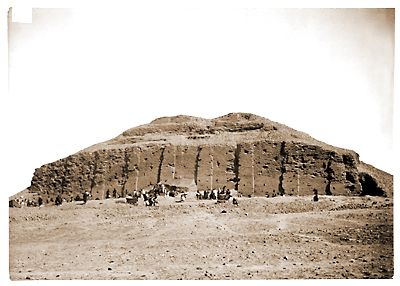 |
|
|
Ancient Babylonia - The Ziggurat |
|
|
|
Ziggurats - History for Kids! |
|
2800 B.C. |
|
Stonehenge is believed to have been built at this time in Wiltshire, England. It is a circular earthwork 320 feet in diameter with 56 pits along the edge, known as the Aubrey holes. The site was expanded and developed for over a thousand years after it's initial beginning.
Thumbnails: pictures I took at Stonehenge in 2004. |
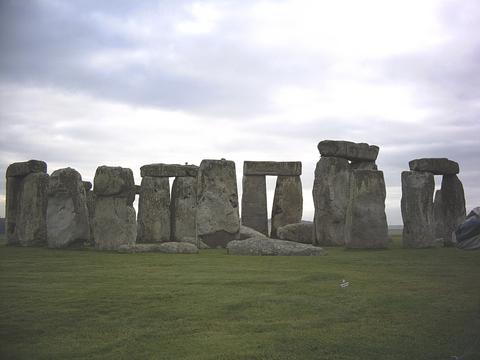 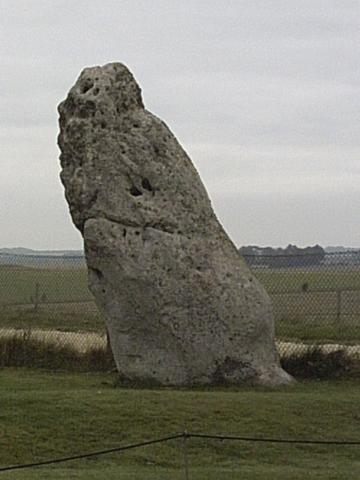 |
2660 - 2150 B.C. |
|
Egypt's Old Kingdom Period (3rd through 6th Dynasties). This period is marked by the reign of King Djoser of the 3rd Dynasty and his construction of the Step Pyramid.
|
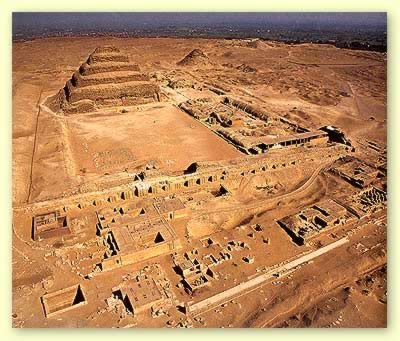 |
2600 B.C. |
|
Minoan civilization on Crete. Historians consider the culture to be older, but very little is known about the Minoans prior to 2600 B.C. |
|
2080 - 1640 B.C. |
|
Egypt's Middle Kingdom Period. |
|
1960 B.C. |
|
Egypt invades Nubia. |
|
1792 B.C. |
|
Hammurabi expands Babylon to include Sumer. |
|
|
|
Catholic Encyclopaedia: Hammurabi |
|
|
|
Fordham University Ancient History Sourcebook: Hammurabi Code |
|
1505 B.C. |
|
Queen Hatshepsut becomes ruler of Egypt.
(1) Hatshepsut,(2) Hatshepsut's cartouche. |
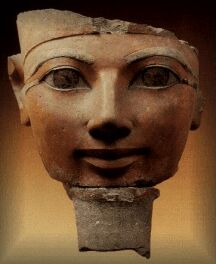 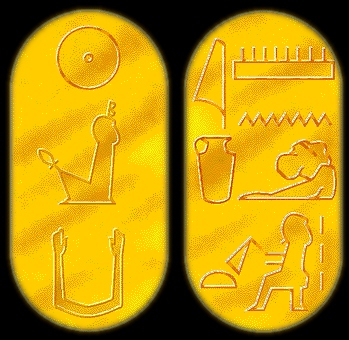 |
|
|
Hatshepsut: The Queen Who Would Be King |
|
1500 B.C. |
|
Long Meg and Her Daughters is probably built around this time. This is a stone circle in Cumbria, England. I visited this stone circle in 2003 and found it in some ways more fascinating than Stonehenge. For one, you can get up close to the stones!
Thumbnails: (1) aerial view of the circle, as you can see a road runs through it..
|
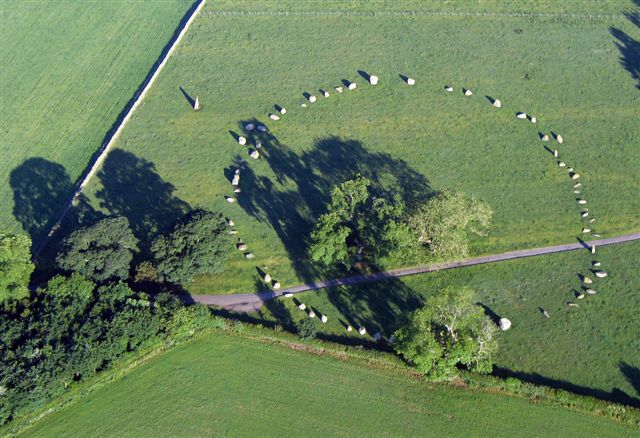 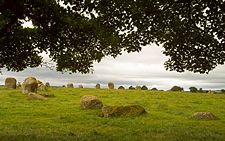 |
1490 - 1436 B.C. |
|
Tutmosis III of Egypt expands the empire to Palestine, Syria, and Nubia. |
|
1450 B.C. |
|
Mycenaeans establish settlements in Anatolia, Sicily and south Italy. Take control of Crete, ending Minoan civilization. |
|
1298 - 1232 B.C. |
|
Ramses II rules Egypt. |
|
1200 B.C. |
|
Olmec civilization at its peak. |
|
1150 B.C. |
|
Mycenaean civilization declines in mainland Greece. |
|
1000 B.C. |
|
Cochise culture dominates the area of modern-day New Mexico and Arizona. |
|
900 B.C. |
|
The Etruscans develop a culture expanding to present-day Tuscany, Latium and Umbria in Italy. (1) a limestone cippus, or marker, would have been placed outside a tomb. |
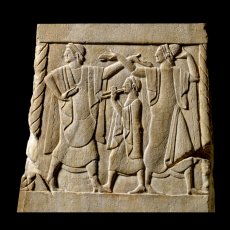
|
883 - 859 B.C. |
|
King Ashurnasirpal II regains lost lands and Assyria once again becomes a great power in Mesopotamia.
Pictures (1) Ashurnasirpal II, (2) lamassu from the palace of Ashurnasirpal II in Nimrud in present-day Iraq. This colossal statue is on display in the British Museum. |
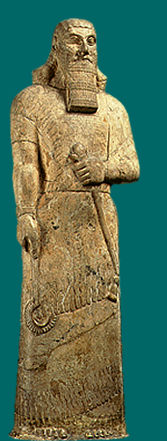 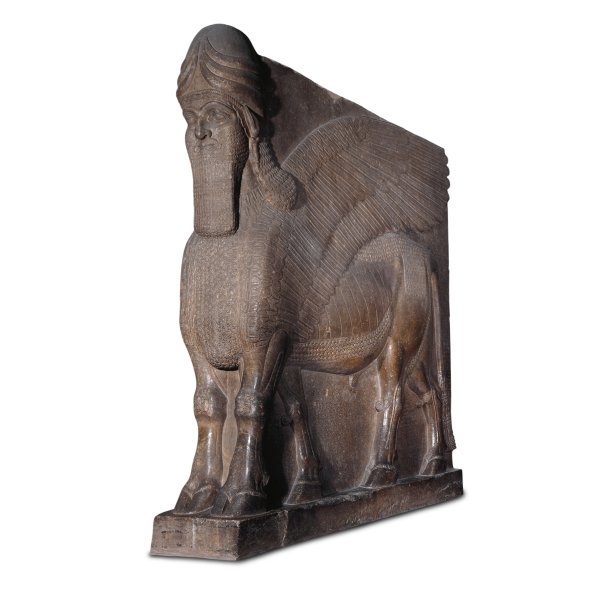 |
800 B.C. |
|
Celts move into England. |
|
|
|
University of Leiden - History of International Migration |
|
800 B.C. |
|
Rome is founded by Romulus and Remus. |
|
|
|
School History - The Story of Romulus and Remus |
|
|
|
Encyclopedia Mythica - Romulus |
|
800 B.C. |
|
Independent city-states develop in Greece; foremost among them are Sparta and Athens. |
|
750 B.C. |
|
The Phoenician colony in Carthage in North Africa develops into a hub of trade for the western Mediterranean. |
|
750 B.C. |
|
The Nubian kingdom of Kush conquers Egypt and rules for 100 years. |
|
|
|
Civilizations in Africa: Kush (Washington State University) |
|
668 - 626 B.C. |
|
King Ashurbanipal, best known for amassing literary texts, including one entitled "The Flood", reigns in in Assyria. Ashurbanipal is mentioned in the Bible in story of Jonah. (1) a relief from the palace of Ashurbanipal in Ninevah, (2) a letter written to Ashurbanipal by his "astronomers" describing a soon-coming lunar eclipse. |
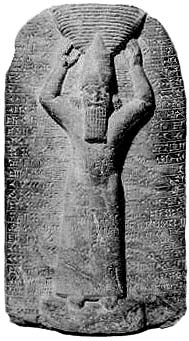 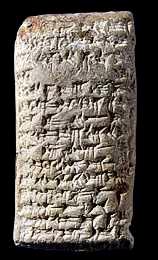 |
664 B.C. |
|
Assyrians drive Nubians out of Egypt. Nubian kings move their capital from Napata south to Meroe. |
|
|
|
|
|
|
|
|
|
| The Classical Age - 500 B.C. - 500 A.D. |
| |
|
|
|
587 B.C. |
|
NebMuchadnezzar II sacks the Kingdom of Judah. Jews carried off to Babylon as slaves. |
|
558 - 529 B.C. |
|
Cyrus the Great rules Elam and Persia and conquers Media, Asia Minor, and Babylon. Some Jews permitted to return to Jerusalem. |
|
522 B.C. |
|
Darius I succeeds as ruler of Persia. |
|
509 B.C. |
|
Romans drive the Etruscans out of Rome, establish the Roman Republic, and conquer Etruscan cities. |
|
490 B.C. |
|
Greek forces halt a Persian incusion into the Greek peninsula. |
|
480 B.C. |
|
Celts of Europe begin migrating to Britain. |
|
430 B.C. |
|
Herodotus completes his Histories. |
|
387 B.C. |
|
Plato founds the Academy, a school of philosophy in Athens. |
|
338 B.C. |
|
Philip II of Macedon occupies all of Greece. |
|
334 B.C. |
|
Alexander the Great invades Persia and carves out an empire stretching from Greece to northwestern India. |
|
312 B.C. |
|
Rome builds its first major road, |
|
300 B.C. |
|
Ptolemaic rule is established in Egypt; the Seleucid rule in the Middle East following Alexander's death. |
|
300 B.C. |
|
The Maya center of Tikal begins construction on a number of monumental pyramids. |
|
264 B.C. |
|
Rome holds its first gladiatorial games. |
|
218 B.C. |
|
Hannibal marches against Rome. |
|
200 B.C. |
|
Hohokam people of modern-day Arizona begin construction on a large system of canals. |
|
200 B.C. |
|
Romans invent concrete and go on to develop the first paved streets, as well as immense aqueducts and bridges. |
|
146 B.C. |
|
Rome destroys Carthage and establishes the province of Africa. |
|
171 B.C. |
|
Mithridates I takes the throne of the Parthian Empire and goes on to conquer much of the Seleucid Empire, including Mesopotamia. |
|
83 B.C. |
|
Rome incorporates Syria into its growing domain. |
|
73 B.C. |
|
Spartacus leads an army of rebel slaves against Rome. |
|
48 B.C. |
|
Having expatriated Roman dominion into Gaul, Caesar becomes dictator-for-life of Rome. |
|
30 B.C. |
|
The Ptolemaic dynasty in Egypt ends with the suicide of Cleopatra and Marc Antony. |
|
30 B.C. |
|
Jesus of Nazareth is crucified by Roman authorities at the behest of the Sadducees and Pharisees. |
|
55 B.C. |
|
Julius Caesar conquers Britain. |
|
60 A.D. |
|
Roman forces defeat celtic Queen Boudicea, stripping women in this society of all political status. |
|
66 A.D. |
|
The Great Jewish Revolt against Roman control of Judaea ends with the destruction of the temple in Jerusalem. |
|
79 A.D. |
|
Mount Vesuvius erupts, burying Pompeii. |
|
100 A.D. |
|
Anasazi people settle into the four corners region of southwestern North America. |
|
224 A.D. |
|
The Parthian Empire is brought down by the Sassanid Empire, which will rule much of the Middle East for the next 400 years. |
|
266 A.D. |
|
Diocletian splits the Roman Empire into two administrative units, the eastern and western. |
|
300 A.D. |
|
Maya societies formulate a system of writing, develop an incredibly accurate calendar based on movement of the celestial bodies, and make advancements in architecture and agriculture. |
|
312 A.D. |
|
Constantine I takes Rome from the last pagan emperor and grants toleration of all religions. |
|
378 A.D. |
|
Roman forces are annihilated by Goths at the Battle of Adrianople. |
|
410 A.D. |
|
Visigoth forces sack Rome, then move on to Spain. |
|
441 A.D. |
|
Attila the Hun launches a massive attack on the deteriorating Roman Empire. |
|
476 A.D. |
|
The final western Roman Emperor is deposed by German chieftain Odoacer. |
|
|
|
|
|
|
|
|
|
|
500 A.D. |
|
Easter Island is settled by Austronesian mariners.
Secrets of Easter Island
The Easter Island Foundation
Easter Island Homepage |
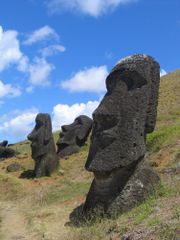 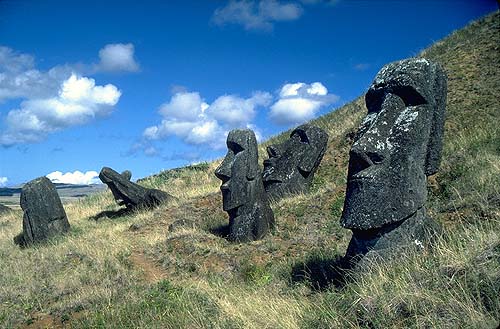 |
|
|
|
|
|
|
|
|
1000 A.D. - 1500 A.D.
|
1000 A.D. |
|
Leif Eriksson is believed to have discovered America. |
|
|
|
Leif Eriksson - MSN Encarta |
|
1000 A.D. |
|
An Indian mathematician recognizes the power of zero. |
|
|
|
The Discovery of the Zero |
|
|
|
|
|
|
|
|
|
1013 A.D. |
|
The Danes conquer England under leadership of Canute the Great. |
|
|
|
Wikipedia: Canute the Great |
|
|
|
Britannia: Monarchs of Britain |
|
|
|
History of the Monarchs (official Royal website): Canute |
|
1050 A.D. |
|
More than 5,000 Anasazi settlers inhabit Chaco Canyon in modern-day New Mexico.
Social Strife May Have Exiled Ancient Indians |
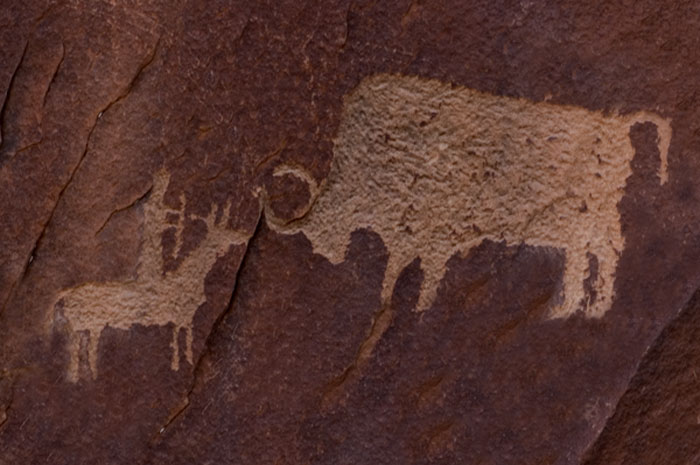 |
1054 A.D. |
|
The schism between Roman and Eastern Churches becomes permanent. |
|
1066 A.D. |
|
William of Normandy (William the Conqueror) defeats King Harold II at the Battle of Hastings, becoming king of England. |
|
|
|
Boise State University: William the Conqueror |
|
1096 A.D. |
|
The First Crusade begins.
Pope Urban II |
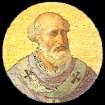 |
|
|
|
|
1099 A.D. |
|
Crusaders take Jerusalem. |
|
1071 A.D. |
|
Turks seize and occupy Jerusalem. |
|
1118 A.D. |
|
The Order of the Knights Templar is created to protect the road to Jerusalem. |
|
|
|
Catholic Encyclopaedia: The Knights Templar |
|
1147 A.D. |
|
The Second Crusade fails when the crusaders perish in Asia Minor. |
|
1151 A.D. |
|
The Toltec Empire in Mexico draws to an end.
Thumbnail: Toltec Noble |
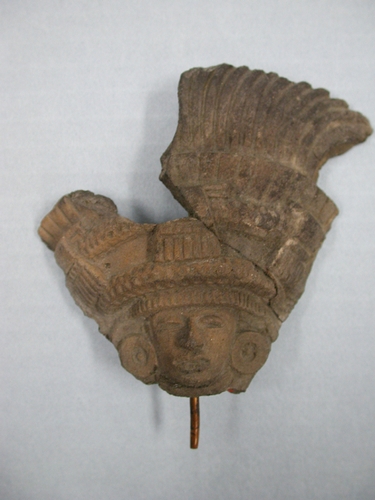 |
|
|
Toltecs |
|
1170 A.D. |
|
Thomas a Becket is murdered at Canterbury Cathedral by Norman knights. |
|
1187 A.D. |
|
Saladin reconquers Jerusalem. |
|
1199 A.D. |
|
Richard the Lion-Hearted is killed at a siege in France and is succeeded by King John. |
|
1200 A.D. |
|
The Early Gothic Period begins in England. (1) gargoyle of Kings Lynn Church in Norfolk, England; gargoyles are typical of the Gothic Period. (2) gothic style church |
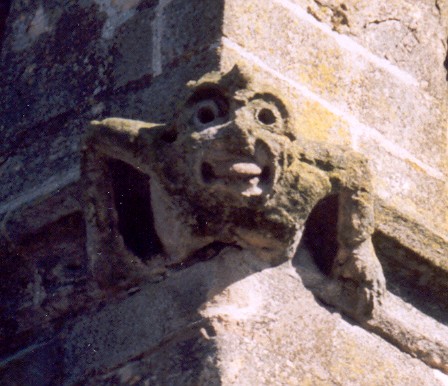  |
|
|
Chronological List of Gothic Artists |
|
1271 A.D. |
|
Marco Polo travels to China. |
|
![]()
![]()























